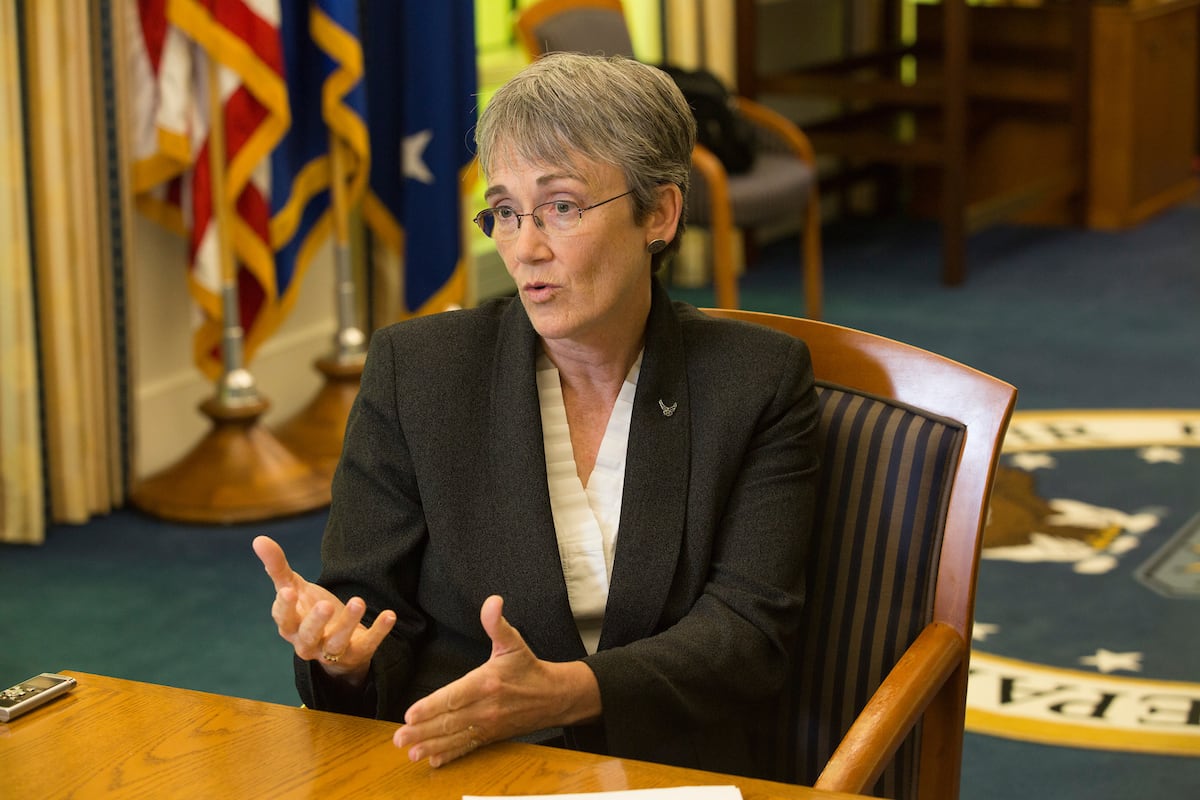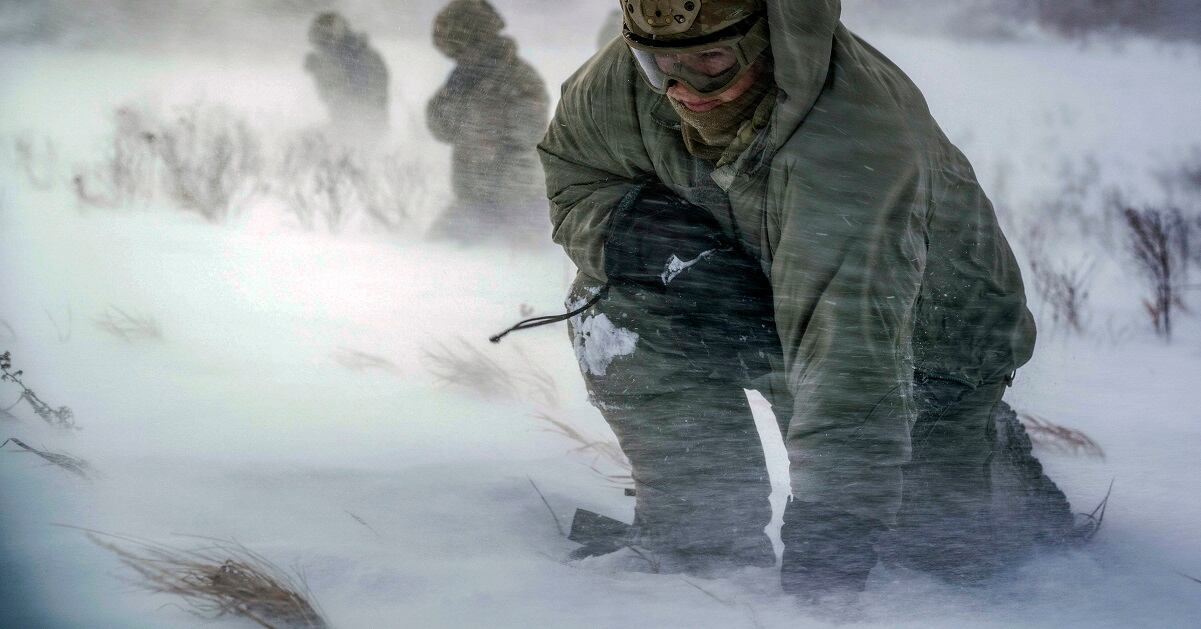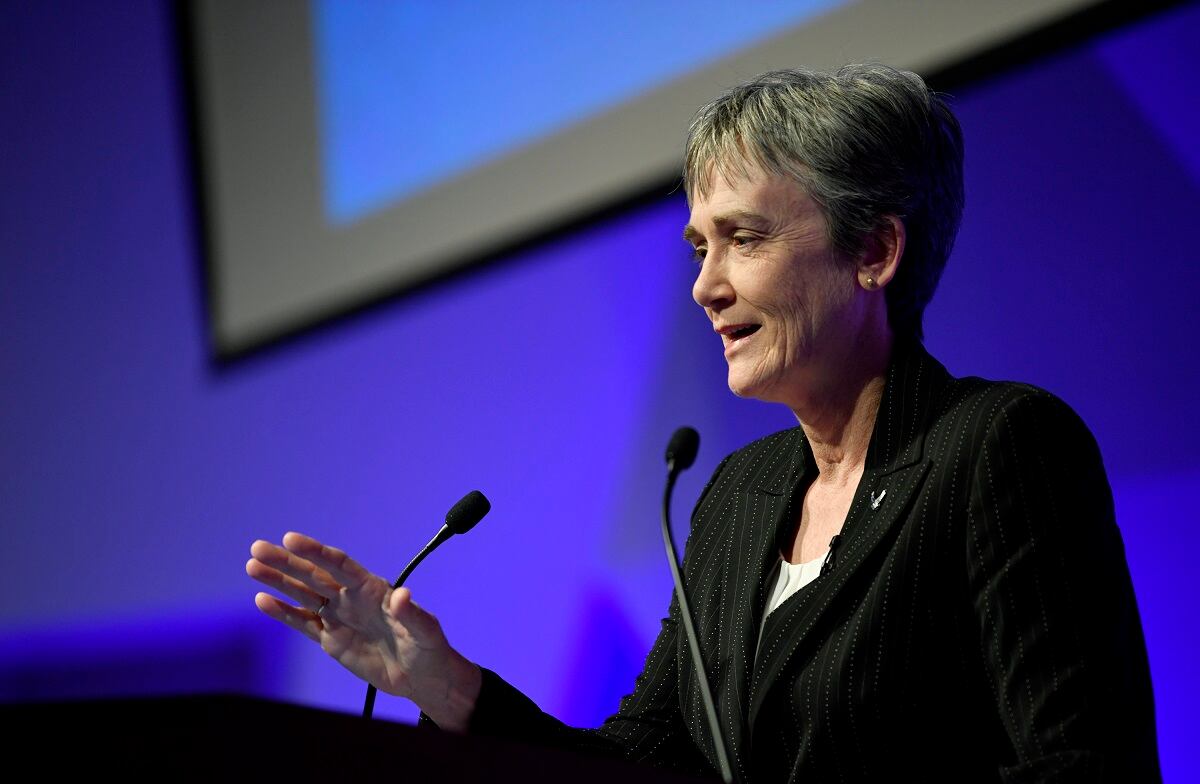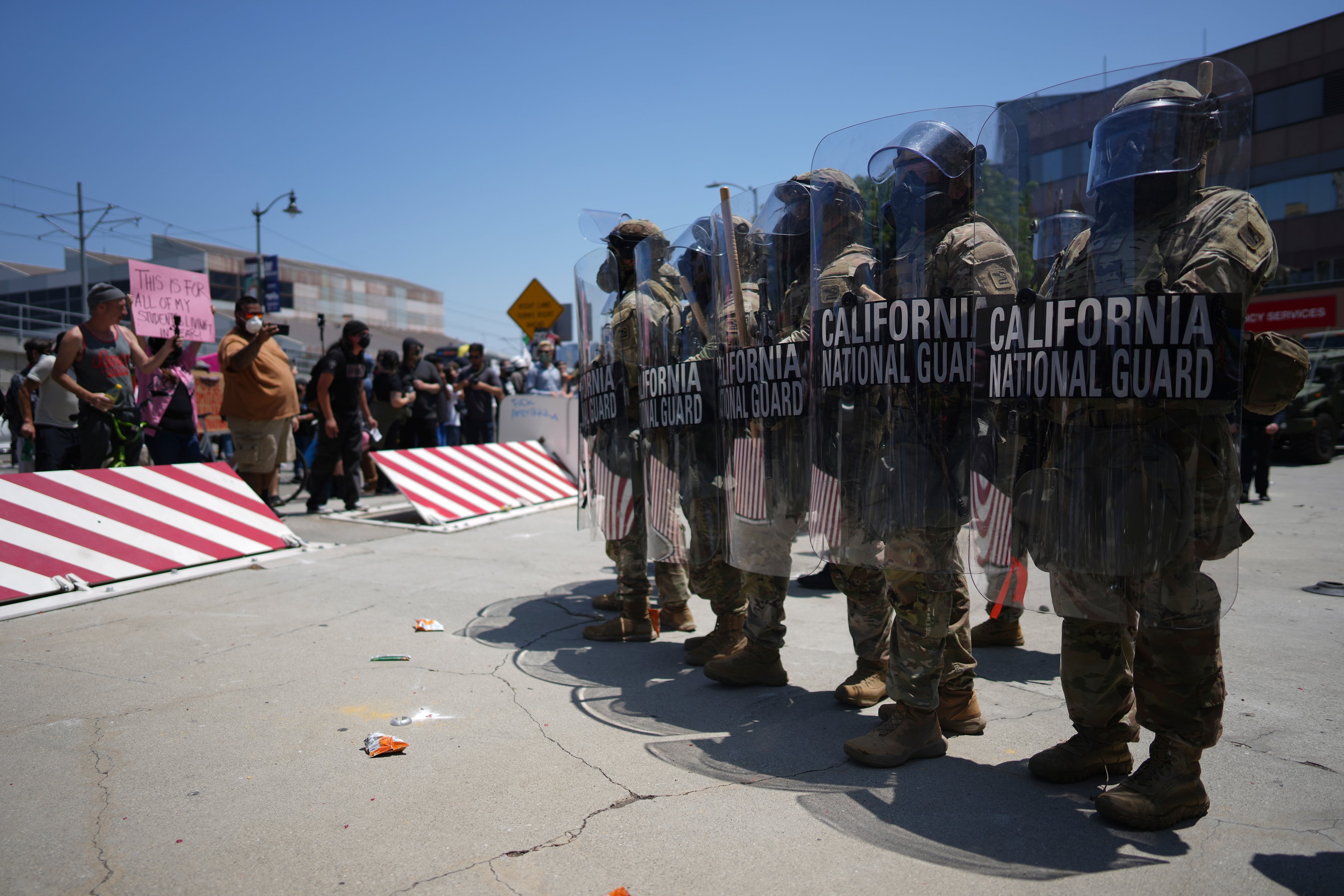The Air Force has a problem.
The military is trying to shift its focus from wars against so-called “violent extremists” in places like Afghanistan, Iraq and Syria so it can prepare for a potential war against a major peer or near-peer nation.
But the Air Force is currently too small even for the missions it’s being asked to do today in the Middle East, let alone a war against China, Russia or North Korea, said Air Force Secretary Heather Wilson in an Aug. 28 interview at the Pentagon. The service is going to have to grow, she said. But the big question is where — and by how much?
Wilson will attempt to answer that question Sept. 17, when she delivers her keynote address, “The Air Force We Need,” at the Air Force Association’s Air Space and Cyber Conference. The secretary will lay out how many operational squadrons — such as fighter, bomber, mobility and intelligence, surveillance and reconnaissance — are needed, as well as the matching end strength, for the Air Force to project power and carry out its expected missions in the future.
RELATED

“The chief and I were asked in this last testimony on the Hill for the Defense Authorization Act, ‘Well, what do you need to implement the new National Defense Strategy?” Wilson said. “We should know the answer to that question. That’s the work that’s been going on the last six months or so.”
The Air Force now has 312 operational squadrons, not including squadrons doing support activities such as finance, Wilson said. Squadrons are the basic unit of the Air Force, she said, which is why this new plan will focus on the squadron level.
The Air Force intentionally didn’t consider budgets as it drew up this plan over the past six months, Wilson said. Instead, it focused on what would be required to fight a major war. With that information in hand, she said, the Air Force can better articulate where it’s headed — and what the potential risks might be of not funding or underfunding certain elements.

Wilson said her staff is still finalizing the report, including what the end strength projections might be under the plan.
In his speech at AFA, Gen. Dave Goldfein, the chief of staff, will also address how the Air Force will fight with the proposed new force structure, Wilson said.
‘Still too high’
While the Air Force is too small, Wilson said its operational tempo remains “still too high.”
In her speech to AFA a year ago, Wilson said this tempo unacceptably strains airmen, who push through the overwork and keep telling her, “We got this.” But to the contrary, she said in 2017, “We don’t got this.”
It’s not fair to keep asking airmen to continue working “to the point of failure,” she said then. They need time to rest and train at home before being tapped to go overseas again.
The Air Force has taken a few steps over the past year to reduce the deployment burden on airmen, such as by bringing home 125 billets at the Combined Air Operations Center at Al Udeid Air Base in Qatar, and reducing the number of 365-day deployments. But the problems largely remain, and Wilson said they have to be addressed if the Air Force is going to shift its focus to the high-end fight.
“It’s not just the ops tempo, it’s being able — when we produce troops to a combatant commander — to say, ‘Yes, we can present these forces and do this particular mission. Here is the price, in terms of operational readiness, for another mission they would be preparing for,’ ” Wilson said. “I don’t think we’ve been very good at that, being able to explain what the consequences are of taking half of this squadron and forward deploying them again.”
As part of that shift, the National Defense Strategy calls for handling the battle against violent extremists with a lower level of effort, she said.
“That’s the only way that we’re going to restore enough time to prepare for a high-end fight, by reducing our commitment to the fight against violent extremism,” Wilson said, “which has put tremendous pressure on the Air Force.”

The Air Force is now in the midst of a study to see whether a lower-cost light attack aircraft could handle some of the missions against groups like ISIS that are now handled by more advanced fighter jets. The Air Force could release a final request for proposal on light attack in December, if it decides to move forward.
As the Air Force enters fiscal 2019, Wilson said her biggest challenges will be continuing to restore end strength after cutbacks under sequestration and improving readiness — particularly by focusing on training.
The Air Force now has about 325,100 active-duty airmen, and is slated to add another 4,000 in 2019. That’s up from about 311,000 at the end of fiscal 2015, after the drawdown.
“The first long pole in the tent for us for readiness was getting enough people,” Wilson said.
The manpower problem particularly showed up in maintenance, she said, which was once short 4,000 maintainers. The Air Force is on its way to wiping out the maintenance shortfall, she said. But the new maintainers are, in many cases, young and need to be trained to be able to do more complex and unsupervised work on aircraft, she said.
The Air Force also needs to focus on training for a higher-end fight, so pilots can penetrate contested airspace, she said.
The Air Force will also continue to prioritize modernizing its fleet of aircraft in 2019 by continuing to work on developing and producing planes such as the F-35, B-21 and KC-46.
Stephen Losey is the air warfare reporter for Defense News. He previously covered leadership and personnel issues at Air Force Times, and the Pentagon, special operations and air warfare at Military.com. He has traveled to the Middle East to cover U.S. Air Force operations.










